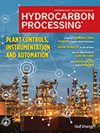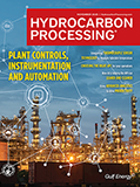Economics
French refinery strikes risk spiraling into bigger crisis for Macron
France's refinery strikes are emboldening hardline unions and the political opposition hoping to ignite a broader movement that could threaten President Emmanuel Macron's reform agenda.
Shell Catalysts & Technologies and Technip Energies strengthen strategic alliance on CANSOLV technology to address growing CCS demand
The strategic alliance is an integrated cooperative relationship for the joint promotion, marketing, licensing and execution of projects using Shell’s CANSOLV CO2 Capture System technology.
French refineries strike continues despite requisition threat
A strike at TotalEnergies' French refineries has been reconducted across all sites after the government warned it would requisition staff at some petrol depots to secure supplies following weeks-long strikes.
Hydrocarbon Processing Award 2022 Winners Honored at Houston Gala
Nearly 150 of the midstream and downstream oil and gas industry’s brightest minds gathered Wednesday to find out, and celebrate, the winners of the 2022 HP Awards.
Carlyle prepares sale of Gabon oil firm Assala Energy
Private equity fund Carlyle Group is preparing to launch the sale of its Gabon-focused oil and gas producer Assala Energy, hoping to raise over $1 B amid high global energy prices, industry sources said.
TotalEnergies accelerates refinery wage talks as fuel supply shrinks
TotalEnergies offered to bring forward wage talks, in response to union demands, as it sought to end a strike that has disrupted supplies to almost a third of French petrol stations and led the government to tap strategic reserves.
2022 HP Awards Finalists
<em>Hydrocarbon Processing</em>, the downstream processing sector’s leading technical publication for 100 yr, has announced the finalists for its sixth annual <em>HP</em> Awards, which celebrate innovative technologies and people that have been instrumental in improving facility operations over the past year.
ASTM D5453 vs. D7039 and the importance of oxygen correction for B100 samples
The use of biodiesel is rapidly becoming more popular due to growing trends both inside and outside the petroleum industry.
U.S. outlines roadmap to boost sustainable aviation fuel
The U.S. Energy Department on Friday issued a plan detailing a government-wide strategy for ramping up production and use of sustainable aviation fuels.
U.S. imposes new sanctions on Iran oil exports, targets Chinese firms
The United States imposed sanctions on companies it accused of involvement in Iran's petrochemical and petroleum trade, including five based in China, pressuring Tehran as it seeks to revive the 2015 Iran nuclear deal.

- Valmet to acquire Severn Group to strengthen Process Performance Solutions segment 12/22
- World’s first dynamic green ammonia plant starts operations in Denmark 12/22
- Baker Hughes to supply liquefaction equipment for Commonwealth LNG export project 12/22
- South Korea petrochemical firms on track to cut up to 3.7 MM tons of output 12/22
- MOL and JERA sign HoAs for the charter of ammonia carriers 12/22
- China's November fuel oil imports up 15% from October 12/22




